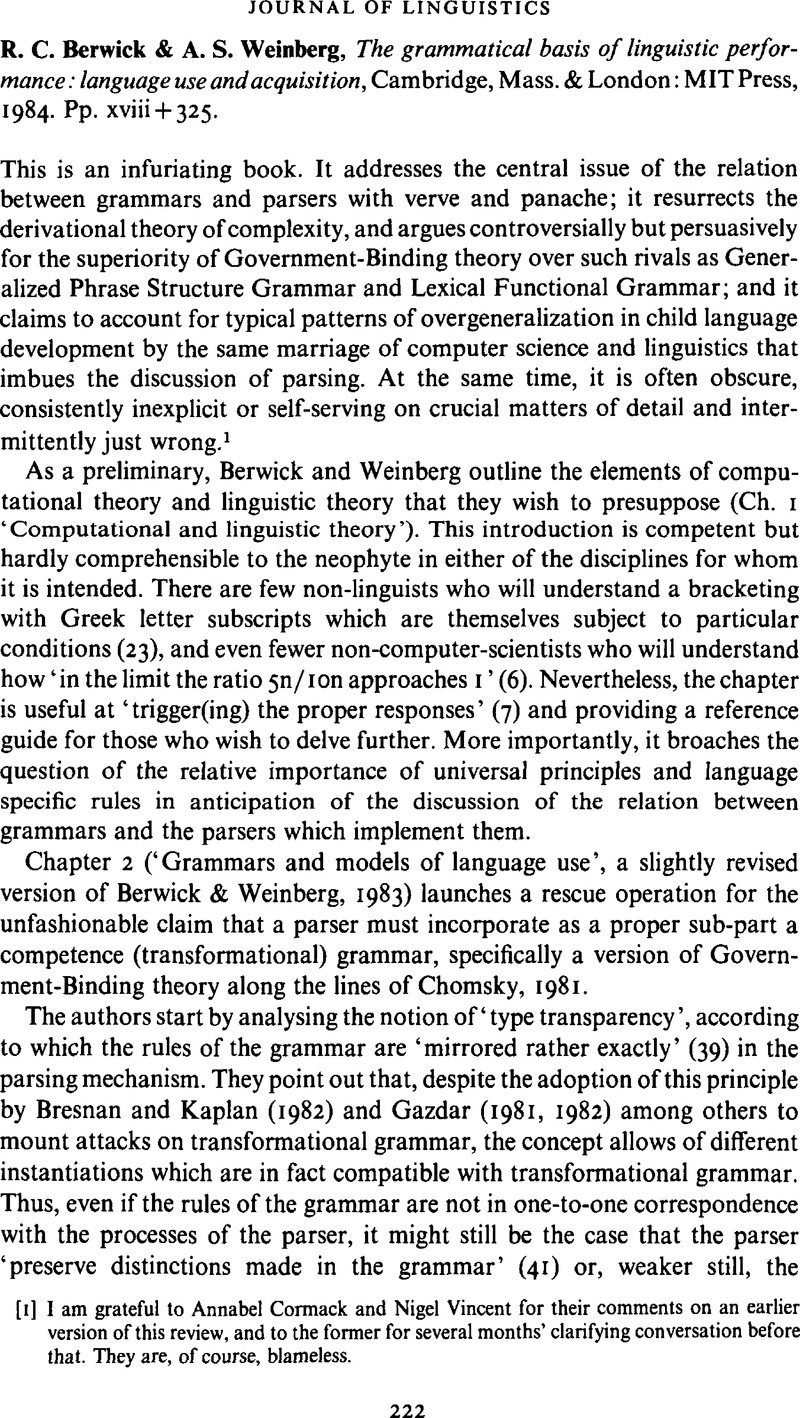No CrossRef data available.
Article contents
R. C. Berwick & A. S. Weinberg, The grammatical basis of linguistic performance: language use and acquisition, Cambridge, Mass. & London: MIT Press, 1984. Pp. xviii + 325.
Published online by Cambridge University Press: 28 November 2008
Abstract
An abstract is not available for this content so a preview has been provided. Please use the Get access link above for information on how to access this content.

- Type
- Reviews
- Information
- Copyright
- Copyright © Cambridge University Press 1986
References
REFERENCES
Berwick, R. & Weinberg, A. (1982). Parsing efficiency, computational complexity, and the evaluation of grammatical theories. LIn 13. 165–191.Google Scholar
Berwick, R. & Weinberg, A. (1983). The role of grammars as components of models of language use. Cognition 13. 1–61.CrossRefGoogle Scholar
Berwick, R. & Weinberg, A. (1985). The psychological relevance of transformational grammar: a reply to Stabler. Cognition 19. 193–204.CrossRefGoogle ScholarPubMed
Bresnan, J. & Kaplan, R. (1982). Introduction: grammars as mental representations of language. In Bresnan, J. (ed.) The mental representation of grammatical relations. Cambridge, Mass.: MIT Press, pp. xvii–lii.Google Scholar
Chomsky, N. (forthcoming). Knowledge of language: its nature, origins and use.Google Scholar
Gazdar, G. (1982). Phrase structure grammar. In Jacobson, P. & Pullum, G. (eds.), The nature of syntactic representation, Dordrecht: Reidel. 131–186.CrossRefGoogle Scholar
Marcus, M. (1980). A theory of syntactic recognition for natural language. Cambridge, Mass.: MIT Press.Google Scholar
Pullum, G. K. (1985). Assuming some version of the X-bar theory. SRC-85–01, Cowell College; University of California at Santa Cruz.Google Scholar
Shieber, S. M. (1985). Evidence against the context-freeness of natural language. Linguistics & philosophy 8. 333–343.CrossRefGoogle Scholar
Sperber, D. & Wilson, D. (1986). Relevance: Communication and cognition. Oxford: Blackwell.Google Scholar
Stabler, E. (1984). Berwick & Weinberg on linguistics and computational psychology. Cognition 17. 155–179.CrossRefGoogle ScholarPubMed
Swinney, D. (1979). Lexical access during comprehension: (re)consideration of context effects. Journal of Verbal Learning and Verbal Behaviour 18. 645–660.CrossRefGoogle Scholar




